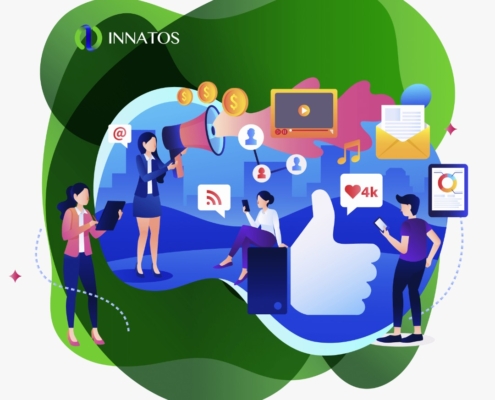21 Best Internal Communication Tools In The Workplace
21 Best Internal Communication Tools In The Workplace. Communications professionals are always looking for new and improved ways to boost and enhance their internal communications efforts to ensure they’re reaching employees in the most effective way possible.
Gone are the days where only memos, phone calls, posters, and staff meetings were the ways boss and staff communicated with each other. Digital workplaces now have a range of different internal communication tools.
Having the best internal communications tools in your toolkit means your workplace will perform better.
> Download 15 free internal email samples <<
What tools do you currently have? Here are some of the most popular staff communication tools other companies will be using in 2021… are they right for you?
-
Internal newsletters
Internal newsletters it’s still one of the most popular communication tools in the job. They allow you to deliver urgent info.
Pros: Cheap and easy to produce and send.
Cons: Email overload may result in reduced open rates and important information being missed.
Examples of internal communications tools: MailChimp, Campaign Monitor.
-
Instant messaging, Internal Communication Tools.
 Instant messaging systems help whether your staff sit at the next desk or across the world. People are used to communicating on similar systems in their personal lives.
Instant messaging systems help whether your staff sit at the next desk or across the world. People are used to communicating on similar systems in their personal lives.
Instant messengers have been extremely useful employee communication tools as people have had to work remotely during the COVID-19 pandemic. If you have a quick question you need an answer from a colleague, it’s a good way to communicate quickly.
Pros: Instant, quicker than emailing back and forth. Less disruptive.
Cons: Needs everyone to actively use the tool and participate. Not so good for big group discussions, or more formal communication.
Examples of internal communications tools: Skype, Facebook Messenger, Microsoft Teams, Google Chat, Jabber.
-
Intranet
Intranets are one of the most common internal communication tools in the job. They are a centralized source of knowledge that employees can access a broad range of topics.
Pros: A right way to share knowledge and files with restricted access and ensures you have a corporate knowledge base.
Cons: Can become too expensive. Information can be difficult to find. Employees may not even know when there is an important update.
Examples of internal communications tools: Intranet software platforms such as Blink, Slack, eXo Platform.
-
Team collaboration tools
Collaboration software helps to keep your team’s communications in one place. It’s very useful for working on projects and sharing knowledge with other areas of the business. They can also be useful when you have remote workers.
During the pandemic, collaboration software has been used more widely than before, as it has helped teams to remain cohesive while working remotely.
Pros: Avoids unnecessary emails. Allows a centralized hub of knowledge. Interactive and encourages a two-way flow of information.
Cons: Can be difficult to transition to. Some team members may continue to email and not adopt fully.
Examples of internal communications tools: Microsoft Teams, Slack, Asana, Basecamp, Trello.
-
Blogs
Internal blogs sit on a business intranet site and can become one of the best ways to encourage discussion. There may be a top-down approach to communication in some businesses where the blog is written by the CEO.
Pros: Useful for sharing information, important announcements, reinforcing policies and procedures, and addressing frequently asked questions.
Cons: This should be regularly updated to be one of the more meaningful communication tools in the workplace. May not be easy to locate on the intranet. May not be read widely.
Examples of internal communications tools: Blogging platforms such as WordPress, Joomla, Drupal.
-
Corporate social media
Staff is used to using social media. There are some platforms that you can only use within a company (such as Yammer) and other times companies may use established social networks.
Pros: Information can be shared quickly. Social media integration can be free or cheap.
Cons: Even in this day and age, not everyone has social media. Some employees would be reluctant to link personal social media accounts to their company and wouldn’t view these platforms as internal communication tools and it wouldn’t be their first port of call to find out information. Allowing social media use at work could be misused. You don’t own the platform and terms and conditions can change constantly.
Examples of internal communications tools: Workplace by Facebook, Yammer.
-
Video chat
Video is very useful for internal communications in large companies and businesses spread across different locations. It is one of the best ways that allow staff to talk even though they may be far away from each other.
While traditionally they could do this by telephone, video chat software enables everyone to get together without leaving their place of work. During the pandemic, video chat software has enabled colleagues to continue to have conversations while working remotely.
Pros: Saves on travel costs. Saves on travel time meaning people can be more productive. Builds a more collaborative team environment. Is more flexible than traditional meetings.
Cons: Technological issues can sometimes make it hard to use, such as slow internet connections or poor facilities and equipment.
Examples of internal communication tools: Skype, Zoom, Microsoft Teams, FaceTime, PowWowNow.
-
Video broadcasts
When you have an official announcement to make, your executives can’t be in every office of a large business at once. Your office may have regular staff meetings that people in regional outposts miss out on and can’t attend. A good way to keep employees in the loop is to broadcast these types of events so that everyone can see and hear, regardless of where they are. Tools such as GoToWebinar can help, and for those who miss out because they were off sick, traveling, on vacation, etc. the recording can still be accessed later.
Pros: Relatively cheap and easy to implement provided you have the best quality camera and sound equipment.
Cons: These employee communication tools may not solve issues when there are language barriers. Some mobile staff may lack the bandwidth on internet plans to watch lengthy video broadcasts regularly.
Examples of internal communications tools: GoToWebinar, Zoom, Webex
-
Alerting software for important communications, Internal Communication Tools.
DeskAlerts is an internal communication tool with many features. Pop-up messages on screens and push notifications on mobile devices form the backbone of this product, but other features include scrolling tickers, surveys, polls, quizzes, corporate screensavers, corporate wallpaper, digital signage, and more to give you different options and allow you to run a best practice and comprehensive internal communications campaign.
Pros: One of the most versatile communication tools in the workplace. Very good if you’re on a budget and don’t want to buy multiple software packages! Bypasses email system and cuts through all the other digital noise and clutter in employees’ daily work lives.
Cons: If you have a unique workplace with no computers, phones, or tablets you won’t be able to use it.
Example of internal communications tools: DeskAlerts
internal_communication_tools_deskalerts
-
Team bonding tools
Tools that help your team get to know each other better can allow greater collaboration. An example is Donut an integration that people use with Slack – that randomly pairs two people from across a business and sets an informal chat so they can get to know one another. Whether it’s bringing together two co-workers who are in the same building, or two who are in different countries.
Pros: Fosters sharing. Builds a team culture. Creates higher levels of engagement.
Cons: Many introverts will hate it and won’t opt-in unless forced. If your workplace is predominantly introverted, it may not be a good tool.
Examples of internal communications tools: Donut, Slack, Microsoft Teams
-
Surveys, Internal Communication Tools.
 Internal communication isn’t all one-way. To be successful, there should be some tools in your internal communications toolkit intended for two-way communication between boss and staff. Surveys can help you determine staff perspectives on many aspects of your business. You can then take steps to change things, and then survey again at a later date to have data to show if your measures were successful or not.
Internal communication isn’t all one-way. To be successful, there should be some tools in your internal communications toolkit intended for two-way communication between boss and staff. Surveys can help you determine staff perspectives on many aspects of your business. You can then take steps to change things, and then survey again at a later date to have data to show if your measures were successful or not.
Pros: Easy to implement – particularly if you have an all-in-one communications tool like DeskAlerts. Survey software does the math calculations for you, taking a lot of the hard work out of it compared to paper-based surveys. The Anonymous nature of surveys can give you better feedback from employees who may be reluctant to share their views otherwise.
Cons: If questions are not specific, you will not get meaningful answers. If employees feel you don’t listen to what they tell you in surveys they may be reluctant to fill in future surveys.
Examples of internal communications tools: DeskAlerts, Survey Monkey
-
Forums
Discussion forums have been part of the internet for a long time. Before the rise of social media, they were one of the most popular ways people would communicate. Discussion “threads” allow multiple people to ask questions, share opinions, get feedback, and solve problems. While many internet forums died off when social media took over, some sites such as Reddit are still very popular., proving that people still like having the ability to share and discuss things this way. The forum software can be added to your company intranet to give employees a place to discuss issues.
Pros: Most intranet software will have a way to integrate this easily. Lets employees are more collaborative and solve problems together without going outside the company for help with internal issues.
Cons: It May need to be moderated, meaning it will take more resources.
Examples of internal communications tools: Forum platforms such as vBulletin, Zendesk.
-
Podcasts, Internal Communication Tools.
Podcasts are enjoying a lot of success right now, with many people tuning in to them for personal and professional development. People are used to listening to them while they work, commute, or even in their downtime while relaxing. This is a good way for internal communicators to create content on any topic that you want your staff to know about.
Pros: Easy to produce and distribute.
Cons: Not everyone will want to listen to podcasts. Best used in conjunction with other communication methods.
Examples of internal communications tools: Podcast software such as Logic Pro, Audacity, Adobe Audition, Alito.
-
Screensavers
Most computers these days no longer use screensavers. Modern monitors are LCD and don’t have this problem, but screensavers are still an option that can be turned on in a computer if it has been unattended for too long.
Pros: Very easy to implement in major operating systems. A good passive way to reinforce your communications campaigns.
Cons: In most cases, you can’t send custom screens to different users simultaneously and need to attract IT, staff, every time you need to send something unless you have a tool like DeskAlerts.
Examples of internal communication tools: DeskAlerts screensaver tool, Adobe Spark.
-
Digital signage, Internal Communication Tools.
When you have other screens throughout your company, such as TV screens in waiting rooms or staff kitchens, they are valuable real estate where you could be communicating company news, remind people about upcoming events, reinforce other messaging such as security and privacy reminders, or showcase your values to a captive audience.
Pros: Easy to use. Capitalizes on screens that may otherwise not be used at all, or only rarely.
Cons: Can be seen by visitors to the company so not useful for secure or sensitive information. Not good for long-form communication on complex subjects.
Example of internal communications tools: DeskAlerts digital signage.
-
Planning tools
Planning tools are a good way to help you get organized and map out your internal communications in advance so you aren’t always rushing around at the last minute looking to fill content holes.
These tools, such as an internal communications editorial calendar, can help you keep track of deadlines, organize and prioritize your workflow, and streamline workflow distribution.
You can even share your planning tools with other parts of the organization so everyone is on the same page – that way they can get information to you and approve content while understanding your needs.
Pros: Increases organization, saves time, helps with teamwork and accountability.
Cons: If other teams in the organization ignore it and don’t stick to deadlines.
Examples of internal communications tools: Excel, Google Drive, Trello.
-
Employee experience tools, Internal Communication Tools.
Employee experience tools are customized software that helps to embed aspects of your business culture.
These tools will let your employees easily access the information they need to do their jobs, such as their planners and emails, documents they’ve been working on, and their most used software applications.
-
Virtual events
Virtual events go further than the average webinar or live stream – they’ve evolved during the COVID-19 pandemic and the subsequent new era of remote/hybrid working that has become the “new normal” in the last year.
Virtual events are mass-employee events that take place online, they allow staff interaction via the ability to ask questions, respond to live polls and even allow the organizers to determine which employees are paying attention and which ones are inattentive.
They’re a great alternative to town-halls and roadshows in large organizations and ensure everyone can find out the same information at the same time as much as is practicable (employees who aren’t on duty may have to watch a recording, but as many town halls aren’t recorded this is still an improvement).
Pros: Less resource-intensive and cheaper to run than taking townhalls on the road in big organizations. Improves information equality and can reduce resentments when regional offices feel they are neglected and forgotten.
Cons: Some employees have poor internet access and the live event experience could be suboptimal. Others may be getting fatigued by too much screen time.
Examples of internal communications tools: GoToWebinar, StreamGo.
-
Idea management tools, Internal Communication Tools.
These software applications help make it easier for organizations to gather ideas and feedback from employees to help improve or create new products or systems.
They can also be used to help coordinate training, ensure a consistent onboarding experience and deliver information that employees need such as payroll information, leave entitlements and balances, managing holidays, and accessing employee benefits.
Pros: Assists organizations maximize productivity in the workplace, reduce wasted time, and improve employees’ working environment.
Cons: May contribute to information overload if not managed appropriately. Older employees may not be comfortable with using them.
Examples of internal communications tools: Officevibe, Qualtrics, Kudos.
Not only does this help to encourage innovation and drive more successful outcomes, but it can help with staff engagement as well. A Salesforce survey found that employees who feel as though their voice has been heard by management are around four to six times more likely to perform at their best.
Pros: Drives innovation and can help to solve just about any problem in the organization, whether it’s safety, communication issues, making processes more efficient, or responding to common customer issues.
Cons: If your workplace is toxic and you have a leadership team that is known to be punitive you may find employees are reluctant to share ideas.
Examples of internal communications tools: Ideanote, Qmarkets, Brightidea.
-
Employee engagement software
This software can help to round out your staff engagement efforts and gauge the mood of employees. You can use it in conjunction with other employee engagement tools such as surveys and wellbeing programs.
They are especially useful for managers with remote teams so they can determine how engaged their direct reports are.
Pros: Helps to boost productivity and collaboration, improves transparency and accountability, can help you retain top employees.
Cons: The software is only as good as your managers. If they’re not committed to acting on results and generating change and improvements it won’t work.
Examples of internal communications tools: 15Five, Qualtrics, Hive.
-
Employee apps, Internal Communication Tools.
This is a tool that has come into its own during the pandemic. An app is a great way to communicate with remote staff or non-office workers. When information changes quickly. you know you can easily reach staff by sending notifications to their smartphones.
Pros: Can easily reach all staff at once and it is highly visible.
Cons: There are still some people out there who don’t have mobile phones. Also isn’t reliable if someone has their phone switched off, in airplane mode, or has a poor internet connection.
Example of internal communications tools: DeskAlerts mobile app.
Which tools do you use? Share your experience in the comments.



Leave a Reply
Want to join the discussion?Feel free to contribute!